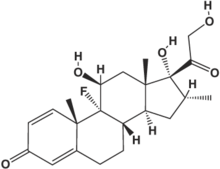Medeva, the pharmaceuticals group that fell from grace after a profits warning in 1993, went a long way to restoring its reputation after announcing better than expected results yesterday.
The shares jumped 15p to 196p after the group revealed a 35 per cent leap in pre-tax profits to pounds 64.2m for the year to December.
The group, which took on new management a little over a year ago, has been struggling to shed its reputation for being driven by deals rather than organic growth. Bernard Taylor, chairman, said 1994 had been a very successful year in accomplishing Medeva's strategy of buying "late- stage" development projects.
He announced the go-ahead for further trials of Hepagene, a vaccine against hepatitis B, which he said "has the potential to transform the group".
According to Bill Bogie, the chief executive who arrived last year, the market for Hepagene is big, covering around 10 million people worldwide. He dismissed problems faced by Medeva over patents with Hepagene in the US.
The company is also very excited about the prospects for its new albuterol metered-dose inhaler for the treatment of asthma and similar conditions. The new product could be ready to attack a pounds 400m market in 1996 if US approvals are received this year.
But analysts believe the shares will struggle to break through the 200p barrier while another deal could be in the pipeline.
Mr Taylor was enigmatic on the subject yesterday, although with net cash balances up to pounds 14m at the year-end the company said it could raise debt finance of over pounds 100m to further its growth. He also said that the recent blockbuster mergers in the industry could spell good news for the company.
Last year's acquisitions - Burroughs Wellcome's Semprex-D antihistamine, Merck's Dexacort inhaled products and Inhalon, with its two anaesthetics - added just 0.5 percentage points to sales up 20 per cent to pounds 240m.
Fully-diluted earnings per share leapt from 11.4p to 13.8p, out of which Medeva is paying a final dividend of 2.2p to raise the total for the year from 2.7p to 3.3p.
Most of the company's growth last year came on the back of its sinister- sounding "attention deficit disorder" drug, methylphenidate.
Sales soared 89 per cent to pounds 66m, against a more pedestrian 7 per cent on average for Medeva's other nine leading products.
Dr Bogie insists that methylphenidate - used to tame disruptive schoolchildren or those who find difficulty concentrating on lessons - treats a genuine medical condition. Its use has expanded by 30 per cent a year over the last four.
Paul Diggle, at the broker Societe General Strauss Turnbull, believes profits from the drug could reach pounds 76.5m this year.
Copyright 1995 Newspaper Publishing PLC
Provided by ProQuest Information and Learning Company. All rights Reserved.



